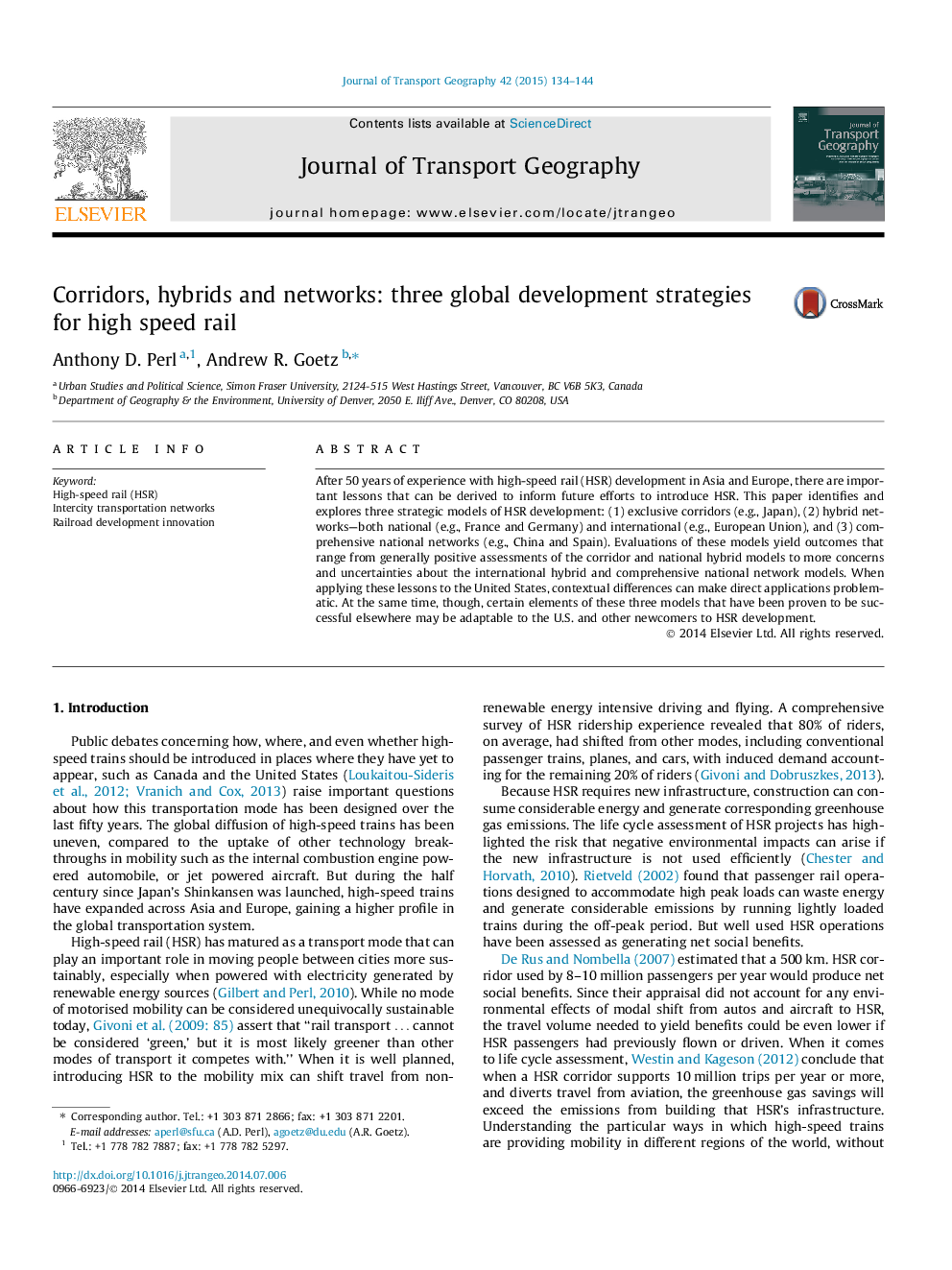| کد مقاله | کد نشریه | سال انتشار | مقاله انگلیسی | نسخه تمام متن |
|---|---|---|---|---|
| 1059166 | 1485425 | 2015 | 11 صفحه PDF | دانلود رایگان |
• Three strategic models of high-speed rail (HSR) development are identified and explored.
• The exclusive corridor (e.g., Japan) and national hybrid models (e.g., France, Germany) have had more positive assessments.
• There are greater uncertainties with international hybrid (e.g., EU) and comprehensive national network models (e.g., China).
• Direct application of the models to the United States is problematic because of contextual differences.
• More successful elements of the models may be adaptable to the United States and other newcomers to HSR development.
After 50 years of experience with high-speed rail (HSR) development in Asia and Europe, there are important lessons that can be derived to inform future efforts to introduce HSR. This paper identifies and explores three strategic models of HSR development: (1) exclusive corridors (e.g., Japan), (2) hybrid networks—both national (e.g., France and Germany) and international (e.g., European Union), and (3) comprehensive national networks (e.g., China and Spain). Evaluations of these models yield outcomes that range from generally positive assessments of the corridor and national hybrid models to more concerns and uncertainties about the international hybrid and comprehensive national network models. When applying these lessons to the United States, contextual differences can make direct applications problematic. At the same time, though, certain elements of these three models that have been proven to be successful elsewhere may be adaptable to the U.S. and other newcomers to HSR development.
Journal: Journal of Transport Geography - Volume 42, January 2015, Pages 134–144
